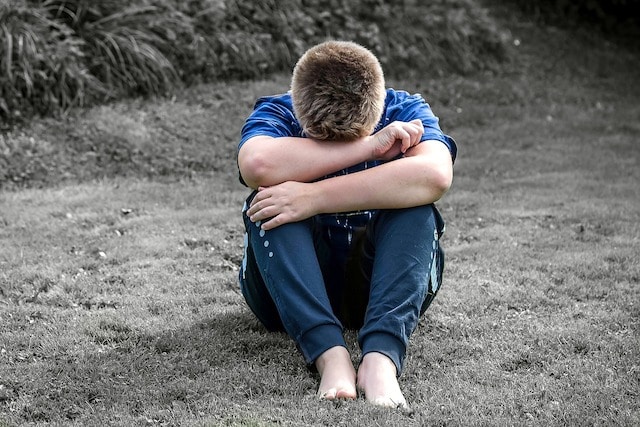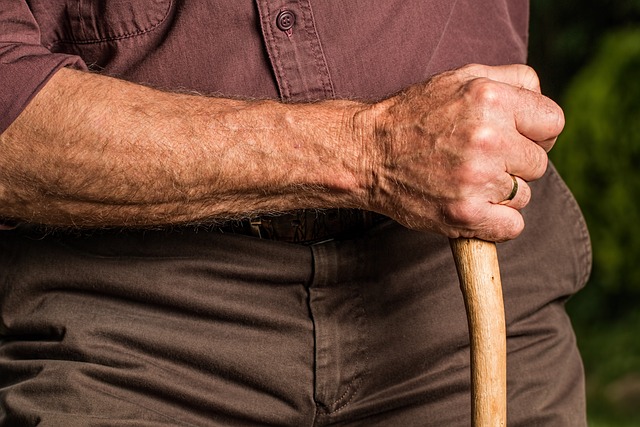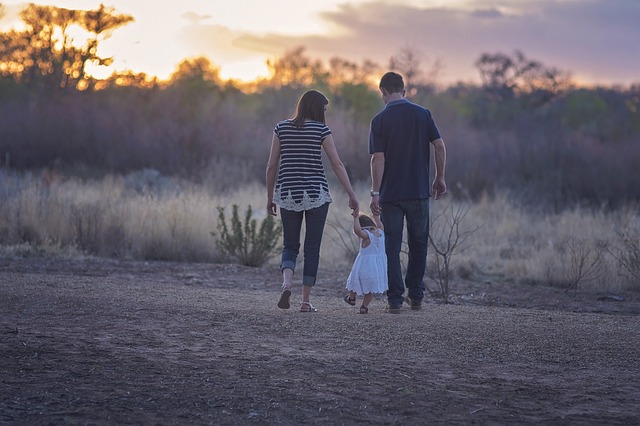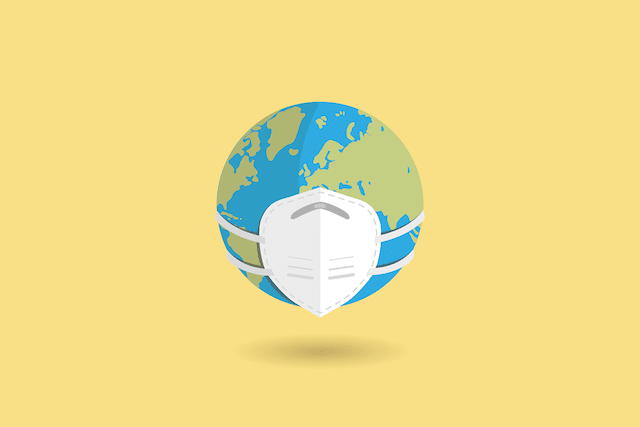10 Common Things That Quietly Raise Death Risk
From the very first breath you take, you unknowingly step onto a one-way track—a journey that everyone eventually completes. Death, that universal destination, spares no one. Sounds grim? Maybe. But if you think about it, the fact that you’re still here is almost miraculous.
Every single day, you’re weaving your way through an invisible minefield of potential dangers. Slipping in the shower, a silent aneurysm, an unexpected freak accident on the highway—you’ve likely brushed shoulders with some form of doom without ever noticing. The human experience is a balancing act between fragility and resilience. It’s kind of incredible when you realize how many possible disasters you’ve narrowly escaped just by living your routine life.
But here’s where it gets really fascinating.
Many of us unknowingly flirt with our own limits. Not in grand, dramatic gestures, but in the small, seemingly harmless habits. Things like sleep deprivation, excessive sugar intake, or chronic stress don’t seem like much in the moment—but over time, they’re quietly pushing the needle. The body has an extraordinary way of adapting, of compensating, of hiding the damage. Until it doesn’t.
This isn’t to say we should walk around in constant fear. Quite the opposite. Knowing how unpredictable and fragile human life can be is actually a weird kind of freedom. It’s a reminder to prioritize what matters, take care of your body, and maybe—just maybe—rethink that fifth cup of coffee or the habit of scrolling under blue light at 2 a.m.
10. Why Your Body Shape Might Say More About Your Health Than You Think

You’ve heard it a thousand times—diet, exercise, and maintaining a “healthy weight” are the golden trio of good health. But what if the shape of your body is quietly telling a deeper story? Not your size. Your actual shape.
Some people are naturally pear-shaped, storing fat around the hips and thighs. Others carry their weight around the belly—a more apple-like silhouette. It might seem like a cosmetic difference, but research suggests this contrast has much more serious implications than most people realize.
Here’s where it gets wild: someone with a “normal” weight but an apple-shaped body may be at higher risk of premature death than someone who’s technically overweight but pear-shaped. How’s that for counterintuitive?
Recent studies, including one that tracked over 15,000 individuals, revealed that a high waist-to-hip ratio can double the risk of death—even in those who aren’t classified as overweight. That stubborn belly fat? It’s been directly linked to conditions like type 2 diabetes, heart disease, certain cancers, high blood pressure, and even dementia.
This isn’t just about aesthetics. It’s about where your body decides to store excess energy—and how that can silently wreak havoc over time. In fact, many experts now argue that Body Mass Index (BMI) may be a misleading health metric. Thin doesn’t always mean fit, and curvy doesn’t always mean unhealthy. What really matters is how and where your fat is distributed.
9. The Hidden Danger of Loneliness: A Threat to Your Lifespan

In the world of health and well – being, there are numerous factors that can impact our longevity. While we often hear about the risks associated with obesity, high blood pressure, and smoking, there’s one factor that might surprise you – a lack of friends and social isolation.
For those who are social butterflies, this is great news. Your friends aren’t just there for a good time; they could actually be helping you live a longer life. On the flip side, introverts or those who struggle with socializing might find this a bit disheartening. Research has shown that a lack of friends and overall loneliness can put you at a greater risk of death than many of the more commonly known health risks.
One study has revealed some startling facts. Social isolation can have a profound impact on your health, equivalent to smoking 15 cigarettes per day. That’s right – the negative effects of being socially isolated can be as severe as the damage caused by a pack – and – a – half of cigarettes daily. This isolation can shorten your lifespan by as much as 15 years.
But that’s not all. People who suffer from loneliness and isolation face a 50% greater risk of developing dementia. Dementia is a devastating condition that affects memory, thinking, and behavior, and the increased risk associated with loneliness is a major concern. Additionally, there’s a 29% increased risk of heart disease and a 32% increase in stroke risk. These are serious health issues that can significantly impact your quality of life and ultimately, your lifespan.
Now, you might think that if you have a good social life, you’re in the clear. However, the reality is that many people aren’t as socially connected as they might think. A third of people over 45 report feeling lonely. This loneliness can persist even when there are others around, perhaps due to a lack of meaningful connections. And it doesn’t get better with age – a quarter of those over 65 qualify as socially isolated. Social isolation means having a lack of social connections, which can lead to feelings of loneliness and all the associated health risks.
8. The Heartbreak That Hurts More Than Feelings: How Losing a Spouse Can Impact Your Life Span

Grief isn’t just an emotion—it’s a whole-body experience. And when someone loses a spouse, the aftermath can be far more devastating than tears and sleepless nights. Turns out, the loss of a life partner doesn’t just break hearts—it may actually shorten lives.
One of the most striking studies on this phenomenon observed over 370,000 elderly couples over nearly 10 years. The results were as heartbreaking as they were telling: after one partner passes away, the surviving spouse’s risk of death increases significantly—not just from emotional causes, but from a wide spectrum of physical ailments. We’re talking about cancer, infections, and even heart disease. It’s often referred to as the “widowhood effect.”
But here’s where things get really surprising: age matters—and not in the way you might think. The younger someone is when their spouse dies, the more sharply their own mortality risk spikes, especially in that first year. And yes, the effect is stronger in men. Research shows that men who lose their wives are 70% more likely to die within a year compared to men of similar age who haven’t experienced that loss. For women, the increase is lower but still significant—about 27%.
What’s behind this tragic statistic? It’s not just sorrow. Scientists believe the stress response triggered by deep emotional trauma can weaken the immune system, raise inflammation, and disrupt the nervous system, leading to a cascade of health issues. If you want to dig into the science, this Psychology Today article explains the biological consequences of intense grief.
It’s also worth noting that social isolation, changes in routine, lack of motivation to eat well or move, and even disturbed sleep patterns contribute to this complex puzzle.
7. The Surprising Link Between Arm Moles and Skin Cancer Risk

When it comes to safeguarding our health, being vigilant about skin cancer is crucial. For years, doctors have been advising us to get any suspicious moles on our bodies checked out. After all, early detection can be a lifesaver. Most of us have several moles scattered across our skin, and while most are harmless, certain changes can be a red flag. If a new mole suddenly appears, or an existing one starts to grow larger or takes on an odd shape, it’s a wise move to have it examined by a medical professional.
However, there’s a lesser – known aspect of mole – related skin cancer risk that you should be aware of. Research has uncovered a connection between the number of moles on your right arm and your overall risk of developing skin cancer. Specifically, if you have over 11 moles on your right arm, your risk of skin cancer is higher. So, take a moment right now to count the moles on your right arm. It might just be a simple self – check that could potentially save your life.
If you do find that you have more than 11 moles on your right arm, it’s important to keep a close eye on them. Make sure you’re using sunscreen regularly, as this can help protect your skin from harmful UV rays, which are a major contributor to skin cancer. Sunscreen acts as a barrier, shielding your skin from the sun’s damaging rays and reducing the risk of abnormal cell growth.
But the number of moles on your right arm isn’t the only factor to consider. Having over 50 moles anywhere on your body is also considered a risk factor for skin cancer. The more moles you have, the greater the likelihood that one of them could become cancerous.
And if you’re unlucky enough to have up to 100 moles on your body, the data is quite alarming. It suggests that you’re now at five times the normal risk for skin cancer. This doesn’t mean that you’re definitely going to develop skin cancer, but it does mean that you need to be extra vigilant. Regular self – checks, along with annual skin exams by a dermatologist, are essential for early detection and treatment.
6. Why Child-Free Couples May Be Facing a Higher Risk of Early Death

Choosing a child-free life is becoming more common than ever. In fact, nearly 44% of adults in the U.S. between the ages of 18 and 49 who don’t have children say they’re unlikely to ever have them. Whether it’s for freedom, finances, lifestyle, or personal fulfillment, the reasons are many—and entirely valid. But here’s something unexpected: some researchers believe there might be health consequences tied to that choice.
A number of studies, including one from Denmark involving over 21,000 couples undergoing IVF treatments, found that couples without children had higher mortality rates over time. In this particular study, women without children were found to be four times more likely to die than those who successfully gave birth. Let that sink in—a fourfold increase.
Now, before jumping to conclusions, it’s important to note that this study focused on couples struggling with infertility, which could itself reflect underlying health issues that contribute to higher death rates. The researchers even emphasized they couldn’t prove causation, only correlation. After all, only 316 deaths occurred over 11 years—hardly a massive sample in statistical terms, but still a signal that caught scientific attention.
Still, other research supports a similar trend. Some sociologists and psychologists suggest that parenthood—for all its chaos and challenge—may offer surprising long-term benefits, including a stronger sense of purpose, more social engagement, and increased support in older age. Curious how parenting might affect longevity? Check out this article from WebMD on how kids influence health.
Of course, not having children doesn’t doom anyone to a shorter life. Health outcomes are influenced by a wide range of factors: genetics, lifestyle, relationships, socioeconomic status, and access to medical care, to name a few. But this kind of research offers a fascinating glimpse into how the structures of our lives—the ones we build around us—might quietly shape our physical health in ways we’re just beginning to understand.
5. The Hidden Dangers of Diet Soda for Women

The soda industry is a colossal force in the global market. In 2020 alone, it generated an astonishing revenue of $221.6 billion. While regular soda is a well-known staple for many, some people opt for diet soda, believing it to be a healthier alternative due to its lack of sugar. The diet soda market, though not as massive as the overall soda business, still manages to pull in over $4 billion per year.
However, recent research has cast a shadow over the supposed health benefits of diet soda, especially for women. A comprehensive study was conducted over a 12-year period, involving 80,000 postmenopausal women aged between 50 and 79. The findings were quite alarming.
The study revealed that women who consumed two or more diet drinks per day faced a significantly increased risk of various health issues. They were 23% more likely to suffer a stroke. Stroke is a serious medical condition that can lead to long-term disability or even death, as it occurs when the blood supply to the brain is disrupted.
In addition, these women had a 29% greater risk of developing coronary heart disease. Coronary heart disease is a major cause of death worldwide, characterized by the narrowing or blockage of the coronary arteries, which supply blood to the heart muscle.
Moreover, the overall risk of death among these women was increased by 16%. This is a substantial rise and should not be taken lightly.
What’s even more concerning is that the risk factors seemed to be even higher for certain groups of women. Obese women and those of African American descent had an elevated risk compared to their counterparts.
It’s important to note that while the study shows a noteworthy correlation between diet soda consumption and these health risks, there is no definite cause-and-effect link. However, this correlation alone should be enough to make you think twice the next time you reach for a diet soda.
4. Why Being Tall and Thin Might Raise Your Risk of a Collapsed Lung

We often think of being tall and lean as the gold standard of health—athletic, graceful, enviable. But nature, as always, has its curveballs. If you’re a tall, slender man, you might unknowingly be at higher risk for something called a spontaneous pneumothorax—better known as a collapsed lung.
It sounds dramatic because it is. This condition happens when air escapes into the space between your lungs and chest wall, creating pressure that can cause a lung to collapse. It’s painful, it’s sudden, and it can happen with no warning at all. Surprisingly, tall, underweight men between the ages of 20 and 40 make up a significant percentage of cases.
Doctors at the Chest Medicine Clinic in Edmonton report that nearly half their pneumothorax patients fall into this exact body category. So what gives? One leading theory points to rapid growth spurts during adolescence and early adulthood. The body shoots upward, but sometimes doesn’t pack on enough muscle or fat to support the frame. This mismatch may cause tiny air blisters, known as blebs, to form near the top of the lungs. When one of these blebs bursts, the lung can give way—just like that.
3. Is Height a Hidden Risk? Taller People May Be More Prone to Certain Cancers

Being tall might earn you the best view at a concert or the occasional compliment about your “presence,” but researchers have uncovered a surprising downside: height could be linked to an increased risk of several cancers. Yes, your long limbs and elevated stature may come with a biological trade-off.
In a sweeping study that tracked nearly 1.3 million women over several years, scientists observed a clear pattern—for every additional 10 centimeters (around 4 inches) in height, the risk of developing any type of cancer rose by approximately 10%. That’s not a small bump when you’re looking at population-wide data.
Dig a little deeper, and the numbers get more specific. For every 5 cm (about 2 inches) over the average adult height:
- The risk of kidney cancer increases by 10%
- Ovarian cancer by 8%
- Prostate cancer by 4%
- And colorectal cancer by 5%
The findings don’t stop there—other cancers, including breast and skin cancers, also show heightened incidence rates among taller individuals. Why? While researchers haven’t nailed down a single cause, one leading theory points to higher cell counts in taller bodies. More cells mean more chances for mutations that could lead to cancer over time. Hormonal differences and growth factors like IGF-1 (Insulin-like Growth Factor 1) may also play a role (more on IGF-1 and cancer).
Of course, you can’t change your height—but understanding your risk factors helps you stay a step ahead. Regular screenings, a healthy lifestyle, and informed conversations with your doctor matter more than ever if you’re on the taller side.
While towering above the crowd has its perks, remember: nature often balances beauty with complexity. Being tall doesn’t doom you, but it’s another reminder that our bodies carry fascinating quirks—some more unbelievable than others.
2. Toxoplasmosis: A Hidden Danger on the Roads

Toxoplasmosis is no stranger to internet lore. For over 15 years, countless websites have delved into the quirky ways this parasite might affect our brains. But as research progresses, we’re constantly uncovering new and alarming impacts it can have on human health.
Let’s start with the well – known life cycle of the Toxoplasma gondii parasite. It typically infects mice and rats, causing them to lose their natural fear of cats. This manipulation is a clever evolutionary strategy, as it allows the parasite to enter the cat’s body and continue its life cycle. And for cat owners, cleaning the litter box can be a gateway for infection, as they may come into contact with the parasite excreted by their feline companions.
But what about its effects on humans? While many online sources have touched on various aspects of toxoplasmosis in humans, a particularly concerning discovery has emerged: it may significantly increase the risk of traffic accidents.
It’s estimated that between 30% and 60% of the global population has been infected by Toxoplasma gondii. One of the ways this parasite seems to impact humans is by slowing down reaction times. Reaction time is crucial when it comes to driving, as split – second decisions can mean the difference between a safe journey and a dangerous accident.
Studies comparing infected and non – infected individuals have revealed a startling statistic. Those who show signs of the parasite are at a 2.65 times higher risk of being involved in traffic accidents. This is a substantial increase and should not be taken lightly.
However, there is a bit of a silver lining. Those who have been infected for a longer period seem to have a lower risk compared to those with more recent infections. This could be due to the body’s immune system adapting to the parasite over time, or other physiological changes that occur with long – term infection.
1. The Surprising Link Between Skipping the COVID Vaccine and a Higher Risk of Car Crashes

It sounds like something straight out of a conspiracy-themed Reddit thread, but hang tight—this one is backed by serious data. A recent study uncovered a head-scratching correlation: people who didn’t get the COVID-19 vaccine were significantly more likely to be involved in traffic accidents.
No, skipping the shot doesn’t magically make your brakes fail or your tires burst. But when researchers dug into data from over 11.2 million individuals, some fascinating behavioral trends emerged.
During a one-month window, they found 6,682 reported traffic crashes across the sample. Of those, 16% were unvaccinated. Yet shockingly, this group accounted for 25% of all accidents—a number way out of proportion. Statistically speaking, unvaccinated individuals had a 72% higher relative risk of ending up in a car crash. And after adjusting for factors like age, gender, income, and even geographic location, the elevated risk remained at 48%.
How could your vaccination status possibly impact your driving?
The researchers propose an intriguing theory: it’s not about the vaccine itself, but rather the psychological profile of someone who chooses not to follow public health guidance. Individuals who are hesitant to trust expert advice might also be more prone to ignore traffic rules, speed limits, and other social norms on the road. It’s not about politics—it’s about personality patterns that overlap in unexpected ways.
This doesn’t mean every unvaccinated person is a reckless driver, of course. But the data opens the door to a broader conversation about risk-taking behavior, distrust in authority, and how our choices in one area of life might reflect tendencies in others.
Still think the world’s predictable? Think again. Sometimes, the most unbelievable truths come with a seatbelt—and a dose of data.

























